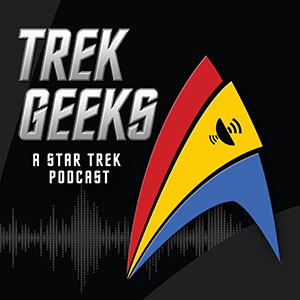Star Trek: Infinite Review
Star Trek: Infinite spoils fans in a way we’ve never seen before. It’s an enormous strategy game that will take hours and hours to learn thoroughly, but once you get the hang of its complex and interconnected systems, you’ll be ruling the galaxy in no time and enjoying every minute of it.
Published by the legendary Paradox Interactive, known for grand strategy games like Stellaris, Europa Universalis, and the Hearts of Iron series, and developed by Nimble Giant Entertainment, Star Trek: Infinite is easily the most complicated Star Trek game ever. For those who can power through and learn the game’s micro- and macro-management systems, there is a lot of control over your faction, and your sense of freedom and destiny will be paramount as you conquer the galaxy.
Managing the Final Frontier
Looking at a screenshot of the game gives prospective players a look at what awaits them. In typical Paradox Interactive style, you, the controller of one faction among four playable factions (Klingons, Federation, Romulans, and Cardassians), can decide how to build your empire. Building such an empire happens on a planet-by-planet, district-by-district, and even building-by-building basis. For real, you can choose which buildings are built in which district of any planet under your control. Once you have a sustainable economy – and this certainly is key to success in Infinite – you can build and maintain your navy to defend your borders or take the fight to the enemy.


Besides economic and military might, a key aspect of galactic control rests in how politically savvy you can be. Diplomatic ties can be forged and broken basically at your whim. A political mistake, as you might imagine, can lead to ruin; a smart political decision can win you power, prestige, and allies.
This is an overwhelming amount of material to learn, but Nimble Giant Entertainment knows this and has built a decent tutorial to help you learn the most pressing game mechanics upfront. Even still, you’ll likely be referring to guides online for a while as you grasp just how much control you have over your faction. You can also always have pop-up tips enabled, so a computer-controlled advisor can help you as you play the game; this feature is essential for newcomers. Our advice is this: grab a drink, clear your schedule, and send your family on vacation so you can sit down and absorb how this game works. Once you do, it’s the kind of experience where you’ll forget what time it is.
Our time with the game in the days leading to its release date was pleasant. There were no game-breaking bugs we encountered (but it appears we were some of the lucky ones among those reviewing the game pre-release), and peer-to-peer multiplayer worked great. For those who are looking to grab a friend and vie for galactic dominance, this game will scratch that itch well. Players online can save their game and continue it later, which means Star Trek: Infinite works well as a pickup-and-play multiplayer game despite the game’s grand strategy style.


Our one major gripe based on our experience deals with the game’s user interface scaler. Ideally, increasing this scaler makes all the small text on the screen appear bigger – which is helpful for those not right up against their monitor, or those using high-resolution displays – but this feature wasn’t quite working correctly in the days leading to release. Hopefully, bringing this feature out of its “experimental” phase is a priority for the development team. A representative from Nimble Giant Entertainment told us, if anything, a fix for this feature would arrive a ways after the game launches, so we aren’t holding our breath for a quick fix.
Playing in the Final Frontier
Much effort was clearly paid to ensure Infinite feels like it’s part of the Star Trek universe. We played as the Federation as we learned the game, and it’s clear the goal is not to go to war if you can help it. The name of the game is exploration and discovery, be it surveying star systems or deciding on courses of action for in-game narrative events. It’s only after you map a star system that you can build starbases, shipyards, research stations, and mineral outposts. All of these are key to spreading your influence across the galaxy. If you are feeling a little antagonistic, you can then build fleets of starships – but because your economy depends on how many resources you produce and the upkeep cost of what you build, you need to be smart about building your empire.


The Federation are peacekeepers, but if that isn’t your style, the other playable factions all control differently enough to warrant their inclusion in the game. Fancy conquering the galaxy as powerfully as possible? The Klingons are good for that. Want to play smart and practice careful spycraft and subterfuge? Who better than Cardassians or Romulans? While the game recommends you learn its systems by playing as the Federation, once you have that solid understanding of how the game works, the other factions will keep you entertained for hours.
Luckily, Nimble Giant has programmed many aspects of empire-building to be autonomous, should you choose. For example, you can set an Oberth-class survey ship to automatically explore the galaxy and survey solar systems, instead of manually ordering it from system to system. Importantly, you can also automate the governance of entire planets to allow the computer to decide how to best foster development. These helpful systems allow overwhelmed newcomers a chance to breathe and divert their attention elsewhere.
Also helpful for those overwhelmed is the pause button, which you can use at any time to halt galactic proceedings and decide what to do next. (There is also an option to slow down or speed up game time). Believe us, when your space is being invaded by angry Cardassians, you realize your economy is producing a negative amount of credits, and you need to decide who to endorse as a candidate for Federation president, you’ll be glad to pause the game to think.
The galaxy itself is firmly entrenched in Star Trek lore. Every planet is recognizable; every ship is either seen directly in canon or close enough to it; the narrative events the player encounters are much like what characters would face in one of the TV shows; and developing planets involves various technologies seen in Star Trek.


There’s even an in-game music player that cycles tracks from the game’s soundtrack – and if you have the Deluxe Edition, tracks from elsewhere in the Star Trek universe. We only wish this music player offered more information about the Deluxe Edition tracks, like the composer and from which episode or series it could be heard. Overall, there’s remarkable attention to detail in Infinite, and clearly, the developers spent no small amount of time making sure the game wasn’t just a Paradoxian strategy game with Star Trek slapped on the cover. This feat alone is worth celebrating.
One note for fans: don’t expect this game to adhere to the canon timeline we know and love. A game of Infinite can last decades of in-game time, starting years before The Next Generation and ending decades later. Over the course of your career, up-and-coming people of note, like admirals, politicians, and scientists, will start their careers and finish them when they die.
Familiar faces, like the main cast of The Next Generation, are introduced over time and sometimes aren’t anywhere close to their in-universe lives. For example, sometime in the 2350s in our Federation game, one William Riker arrived on the scene ready to recruit, and we had him explore the galaxy in a scout ship until we unwisely provoked the Bajorans and they destroyed Riker’s ship. Oops. There’s certainly a level of unbridled freedom in not confining yourself to the Star Trek timeline, so we don’t mind this game not sticking to canon.
There’s much more we could say about this intricate game, but taken together, Star Trek: Infinite is a welcome newcomer on the Trek video game scene. Let’s celebrate for a moment how Trek gamers have eaten pretty well recently. Last year saw Star Trek: Prodigy: Supernova and its kid-friendly co-op gameplay. This year we’ve already had Star Trek: Resurgence, a competent narrative-focused title that stayed true to Star Trek’s ethos. And now Infinite is a complex, intellectual affair that is well-suited for either late-night solo sessions or faceoffs with friends. The game is immense, to be sure, and be prepared for a lengthy learning period. But once you do get to grips with your empire’s economy, military, and politics, Infinite keeps on giving. Nimble Giant Entertainment should be proud of the title they’ve contributed to the lengthy history of Star Trek games; unlike many of those games, this one earns your time and money.


The base game is $30 and the Deluxe Edition is an additional $10; this edition will get you some cosmetic items related to Lower Decks, the California-class vessel to add to your fleet, additional tracks for the in-game music player, a digital art book, and a voiceover pack for those who play as the Klingons. Both tiers of this game’s release are worth the relatively low cost, and there are no microtransactions to be found, which is a great relief in an age where such systems take over many games.
We heartily recommend Star Trek: Infinite for those looking for a challenge and enjoy well-built strategy experiences.
Star Trek: Infinite is available on Steam.
Stay tuned to TrekNews.net for all the latest news on Star Trek: Strange New Worlds, Star Trek: Picard, Star Trek: Discovery, Star Trek: Lower Decks, Star Trek: Prodigy, and more.



























![2023: A banner year for Star Trek — here’s why [Op-Ed]](https://treknews.net/wp-content/uploads/2024/01/star-trek-2023-year-in-review-600x337.jpg)












![[REVIEW] STAR TREK: SHORT TREKS "Children of Mars": All Hands... Battlestations](https://treknews.net/wp-content/uploads/2020/01/review-star-trek-short-treks-children-of-mars.jpg)


























